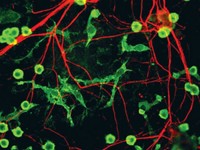Advertisement
Grab your lab coat. Let's get started
Welcome!
Welcome!
Create an account below to get 6 C&EN articles per month, receive newsletters and more - all free.
It seems this is your first time logging in online. Please enter the following information to continue.
As an ACS member you automatically get access to this site. All we need is few more details to create your reading experience.
Not you? Sign in with a different account.
Not you? Sign in with a different account.
ERROR 1
ERROR 1
ERROR 2
ERROR 2
ERROR 2
ERROR 2
ERROR 2
Password and Confirm password must match.
If you have an ACS member number, please enter it here so we can link this account to your membership. (optional)
ERROR 2
ACS values your privacy. By submitting your information, you are gaining access to C&EN and subscribing to our weekly newsletter. We use the information you provide to make your reading experience better, and we will never sell your data to third party members.
Biological Chemistry
Brain Chemistry
Molecular clue links ALS to other dire ailments
by Ivan Amato
October 9, 2006
| A version of this story appeared in
Volume 84, Issue 41
The identity of the major protein in tanglelike inclusions associated with both amyotrophic lateral sclerosis (ALS), or Lou Gehrig's disease, and a common family of brain-wasting disorders known as frontotemporal lobar dementia (FTD) has been revealed (Science 2006, 314, 130).
In recent years, researchers have been finding protein-based tangles and plaques in tissue associated with many neurodegenerative diseases, including Alzheimer's and Parkinson's. Identifying the proteins in these cellular inclusions has, in some cases, opened pathways toward therapeutic targets.
There are no treatments for ALS or FTD, says research leader Virginia M. Y. Lee of the University of Pennsylvania School of Medicine. "To have this molecular identity is incredibly important" for understanding and perhaps treating these conditions, comments neurodegenerative disease researcher Michael Hutton of the Mayo Clinic Jacksonville, in Florida.
Lee's team used biochemical and antibody-based methods to isolate, characterize, and identify TDP-43 as the protein in inclusions of diseased brain tissue. In affected tissue, the protein, which is normally present in nuclei, accumulates abnormally in the cells' cytoplasm, extensions known as neurites, and, in some cases, nuclei.
"We believe these TDP-43 tangles will turn out to have a causal role" in ALS and FTD, Lee says, noting that finding this molecular connection among the disorders came as a surprise. "We went after the disease protein in FTD, and then we found it was also in ALS," she says. Now she plans to investigate TDP-43's normal cellular roles and determine if the TDP-43 tangles are indeed central to the pathology of these diseases.





Join the conversation
Contact the reporter
Submit a Letter to the Editor for publication
Engage with us on Twitter